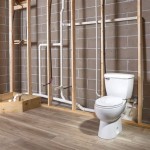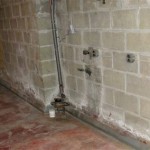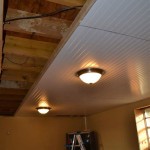How To Make Basement Storage Shelves
Basement storage solutions are often a critical component of home organization, transforming underutilized space into a functional area. Constructing bespoke storage shelves caters to specific needs and maximizes available square footage, particularly in irregularly shaped basements. This article provides a comprehensive guide for designing and building durable and efficient basement storage shelves, covering aspects from planning and material selection to construction techniques and safety considerations.
Planning and Design Considerations
Effective planning is paramount before commencing the construction of basement storage shelves. This initial phase involves a thorough assessment of storage requirements, space constraints, and environmental factors present in the basement.
The initial step involves a detailed assessment of the items to be stored. Categorizing these items based on size, weight, and accessibility frequency informs decisions regarding shelf dimensions, spacing, and weight-bearing capacity. Heavy items, such as tools or canned goods, necessitate sturdier shelving with reinforced supports, while lighter items, such as seasonal decorations or linens, can be accommodated by lighter-duty shelving.
Next, accurately measure the available space in the basement. Consider the height, width, and depth of the area where the shelves will be located, taking into account any obstructions such as pipes, ductwork, or electrical panels. Document these measurements precisely, creating a detailed sketch of the area. This sketch will serve as the foundation for designing the shelving unit and ensuring a proper fit within the designated space.
Basements are often subject to moisture and fluctuating temperatures. Understanding the humidity levels and potential for water intrusion is critical for selecting appropriate materials. Untreated wood is susceptible to mold and rot in damp environments, whereas metal shelving may corrode. Evaluating the basement's environment allows for selecting materials that can withstand these conditions and ensure the longevity of the storage shelves.
Design the shelving layout based on storage needs and space constraints. Several shelving configurations are possible, including freestanding units, wall-mounted shelves, and corner shelves. Freestanding units offer flexibility and portability, while wall-mounted shelves maximize floor space. Corner shelves effectively utilize often-neglected corners, optimizing storage capacity. Consider a combination of configurations tailored to specific requirements and the architectural features of the basement.
Safety considerations must be integrated into the design. Shelves should be designed with sufficient depth and stability to prevent items from falling. Adjustable shelves provide flexibility for accommodating items of varying heights. Incorporate features such as shelf lips or dividers to secure items and prevent them from sliding off. Secure wall-mounted shelves firmly to wall studs to ensure structural integrity and prevent collapse.
Document the design in a detailed plan, specifying dimensions, materials, and construction techniques. Include a cut list for all lumber or shelving components, as well as a list of required tools and materials. A well-defined plan minimizes errors and streamlines the construction process.
Material Selection and Tool Requirements
Choosing the appropriate materials and assembling the necessary tools is crucial for constructing durable and functional basement storage shelves. Material selection should consider the basement environment, budget constraints, and desired aesthetic appeal.
Wood is a common choice for shelving, offering versatility, affordability, and ease of construction. Pressure-treated lumber is recommended for basements due to its resistance to moisture and rot. However, it is important to note that pressure-treated lumber may contain chemicals that require proper handling and disposal. Untreated lumber can be used in drier basements, but it should be sealed with a moisture-resistant finish to protect against potential damage. Plywood provides a stable and cost-effective option for shelves, but it should be of a high grade to prevent warping or sagging under heavy loads.
Metal shelving offers superior strength and durability, making it suitable for storing heavy items. Steel shelving is particularly robust and resistant to corrosion, although it may require a protective coating to prevent rust in humid environments. Metal shelving can be purchased pre-fabricated or constructed from individual components, allowing for customization of size and configuration. Wire shelving provides good ventilation and prevents dust accumulation, but it may not be suitable for storing small or irregularly shaped items.
Fasteners play a crucial role in the structural integrity of the shelving unit. Screws provide a stronger and more secure connection than nails, particularly for heavy-duty shelving. Use screws of appropriate length and gauge for the chosen materials. Galvanized or stainless steel screws are recommended for basements due to their resistance to corrosion. Construct brackets and supports to enhance the shelving structure that are made of durable materials like steel.
A comprehensive toolset is essential for efficient and accurate construction. A power drill with various drill bits is necessary for creating pilot holes and driving screws. A circular saw or miter saw is required for cutting lumber to the desired dimensions. A level ensures that the shelves are installed straight and plumb. A measuring tape and pencil are used for accurate measurements and marking. Safety glasses and gloves provide essential protection during the construction process. A stud finder locates wall studs for secure attachment of wall-mounted shelves.
Safety equipment is paramount throughout the construction process. Wear safety glasses to protect the eyes from debris, and gloves to protect the hands from splinters and sharp edges. Use a dust mask when cutting or sanding wood to prevent inhalation of dust particles. Work in a well-ventilated area to minimize exposure to fumes from paint, sealant, or adhesive. Follow all safety instructions provided by the tool manufacturers.
Construction Techniques and Installation
The construction phase involves assembling the shelving components according to the design plan. Attention to detail and adherence to established construction techniques are critical for ensuring the structural integrity and stability of the shelving unit. All cuts must be accurate and precise to ensure overall structural integrity.
Begin by cutting all lumber or shelving components to the dimensions specified in the cut list. Use a circular saw or miter saw to make accurate and clean cuts. Double-check all measurements before cutting to minimize errors and waste. Sand the edges of the cut pieces to remove any splinters or rough spots.
Assemble the frame of the shelving unit, connecting the vertical supports to the horizontal shelves. Use screws to create strong and secure joints. Pre-drill pilot holes to prevent the wood from splitting. Ensure that the frame is square and level before proceeding. Use a carpenter's square to check the corners and adjust as necessary. Clamps can be used to hold the pieces together while the screws are being driven.
Install shelving supports to reinforce the shelves and prevent sagging under heavy loads. Supports can be made from wood or metal and should be spaced evenly along the length of the shelves. Attach the supports to the frame using screws or nails. Ensure that the supports are aligned properly and securely fastened.
For wall-mounted shelves, locate the wall studs using a stud finder. Mark the location of the studs on the wall with a pencil. Attach the shelving unit to the wall studs using screws. Use screws of sufficient length to penetrate the studs securely. Check the level of the shelves before tightening the screws. Shims may be needed to level shelves on uneven walls. Aim for a level result.
Apply a finish to the shelving unit to protect the wood from moisture and enhance its appearance. Use a moisture-resistant sealant or paint that is specifically designed for basements. Apply multiple coats of finish, allowing each coat to dry completely before applying the next. Ensure adequate ventilation during the finishing process.
Install shelf liners to protect the shelves from scratches and spills. Shelf liners can be made from plastic, rubber, or fabric. Cut the liners to size and place them on the shelves. Secure the liners with adhesive if necessary. Shelf liners make it easier to clean and maintain the shelves.
Load the shelves with the stored items, distributing the weight evenly. Avoid overloading the shelves, particularly with heavy items. Place heavier items on the lower shelves to improve stability. Organize the items in a logical and accessible manner. Label the shelves to easily identify the contents.

Diy Basement Shelving The Wood Grain Cottage

Diy Basement Shelving The Wood Grain Cottage

How To Build Storage Shelves For A Basement Free Standing

How To Build Inexpensive Basement Storage Shelves

How To Make A Basement Storage Shelf

Diy Basement Shelves With Video Remodelando La Casa

How To Make A Basement Storage Shelf

Diy Basement Shelving The Wood Grain Cottage

How To Build Storage Shelves For A Basement Free Standing

Diy Basement Shelves In A Day Merrypad







